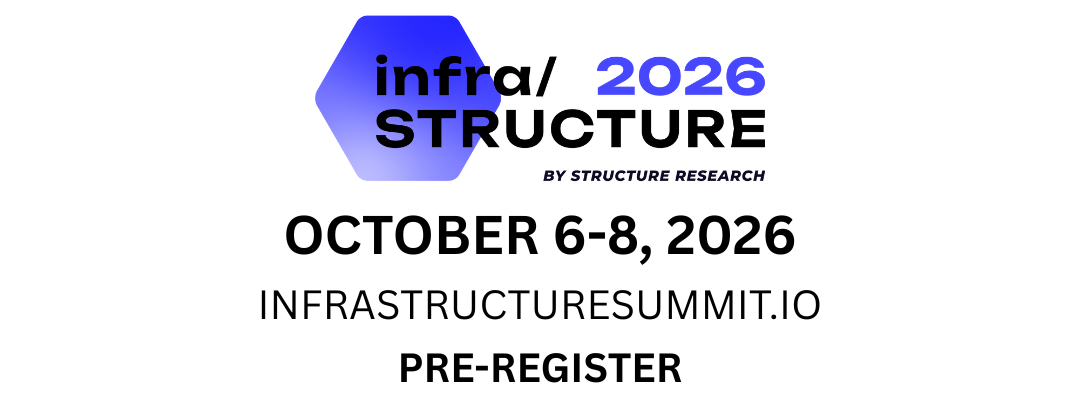WSS: GPU cloud infrastructure build-out continues to spark investment, expansion, new company and project formation
The past week saw a wide range of activity on a global basis. There was movement in the GPU cloud space, and notable activity in Europe and APAC, with investors and operating platforms looking to tap into the wide opportunity of the sector through expansion, investment and new market entry. Some of this activity came from existing operating platforms taking advantage of scope and scale, while there was also more new company formation and projects being brought to market, built on unique locations and ownership of underlying infrastructure assets.
Earnings season will start in a few weeks, but Applied Digital reported its FY1Q25 results, which give us some sense for how the GPU cloud side of the game is tracking. Applied Digital’s revenue base is relatively evenly split between cloud infrastructure and data centre colocation revenue and the recent quarter was driven by growth in cloud infrastructure. The data centre colocation business at Applied Digital is still oriented more to cryptocurrency when it comes to revenue generation, but a hyperscale cloud deal is close to being completed and we will soon get a better sense for how much data centre colocation revenue this will contribute.
The growth in GPU cloud continues to push forward and the focus is still very much on gathering resources and procuring capacity. To that end, CoreWeave just secured a new $650m credit line, while Lambda is set to take down over 20MW of capacity in a colocation environment to support its growth. The Lambda expansion is interesting in that filings show how server partner Supermicro has gotten involved to sub-lease the capacity to Lambda. There are clearly ecosystem pieces that have a vested interest in GPU cloud expansion and growth, and they can and will support operating platforms and try to clear hurdles slowing go-to-market efforts and strategies.
Meanwhile, there has been more innovation on the GPU cloud side of the game. Lambda recently rolled out a version of its cloud infrastructure service that can be consumed on-demand and in a self-serve delivery model. On the hyperscale side, Oracle Cloud is looking to provide options for customers focused on performance and released a bare metal GPU cloud service that is built on AMD-based chips.
Hyperscale public cloud growth, augmented and enhanced by what is happening with GPU cloud, continues to drive investment, growth and expansion across the sector. Big bets have been made in APAC from the hyperscalers, particularly in Southeast Asia, and there is a spin-off effect into the ecosystem as they look to support this growth with data centre infrastructure. STT GDC is set to double down in the burgeoning Indian market, making an investment of over $3.2b. The hyperscalers are investing in emerging markets like Indonesia and have seen things really start to take off, with various new market entries over the last few years. The latest will see SM+, part of Indonesian conglomerate Sinar Mas, partner with South Korea’s LG CNS to build a data centre in Jakarta focused on AI workloads. Most of the recent entrants are focused on hyperscale, but this project is looking to address AI demand for high-density infrastructure coming from the enterprise market. The hyperscale data centre market is getting crowded and alternative strategies will be required.
There was also more new market entry coming out of Europe and the US. Apto is a new hyperscale data centre platform focused on Europe and its first project was confirmed to be in Athens, Greece. Apto was formed last year to target build-to-suit deployments for hyperscale customers in Europe. Quadrivium Digital is another new entrant and its first market is Crete in Greece. Just this past week, it confirmed a second project in Genoa, Italy. Quadrivium Digital looks to be focused on projects in emerging European markets with a subsea cable and connectivity angle. Another new project we have been tracking is TECfusions. TECfusions has turned an old industrial site in Clarksville, Virginia into an operating data centre colocation facility and recently brought online another data hall. It is planning to procure more power to help create more inventory.
The growth in GPU cloud has been pushing ahead mostly in US markets, but that has quickly changed. Hyperscale platforms are going to push GPU-oriented workloads out globally sooner than later and the data centre operators that serve them are accelerating forward planning and getting inventory ready. Digital Realty confirmed in public comments that it is seeing AI demand emerge quickly in Europe and APAC, and while things are early, and new, it is clear that things will move faster than ever before. If the AI wave is hyperscale cloud 2.0 (and this is what we have argued), the one difference will be the speed at which things move. GPU cloud infrastructure is going to benefit from the foundation of public cloud that has been built out and this will make the global expansion wave possible now rather than having to wait several years for things to get in place and play out.
or



